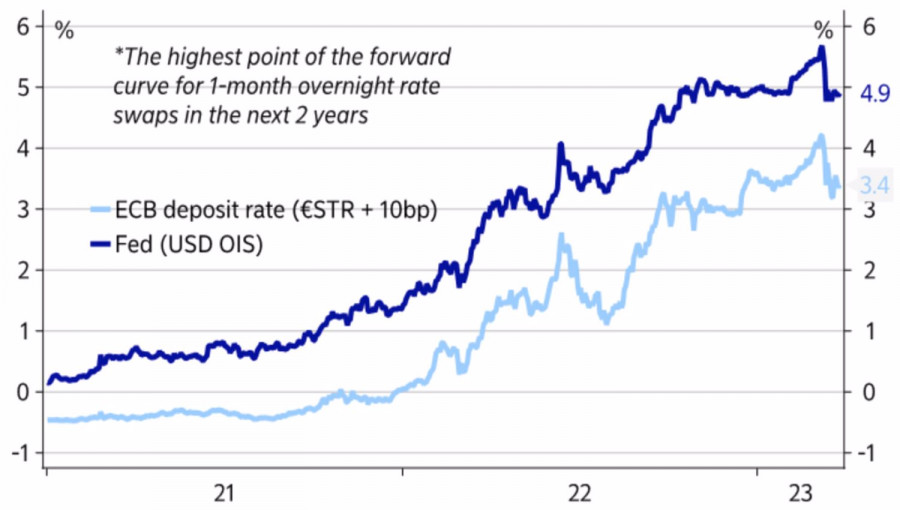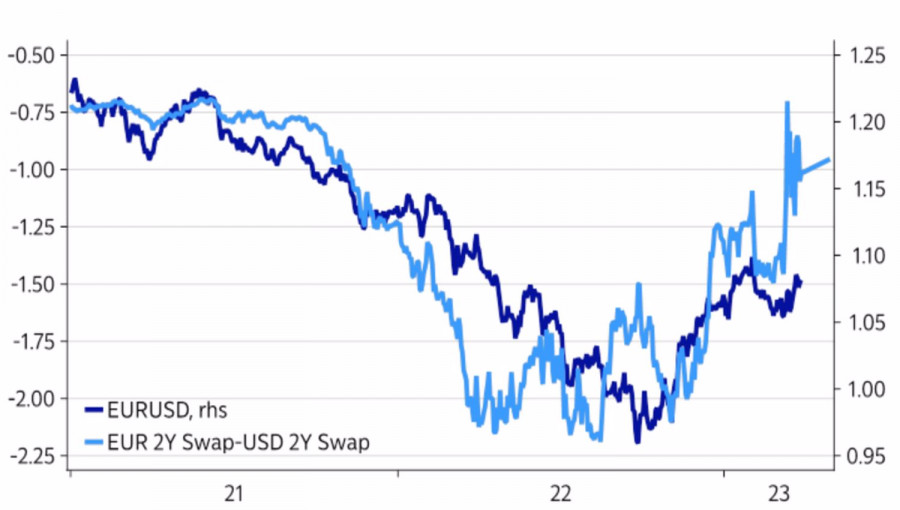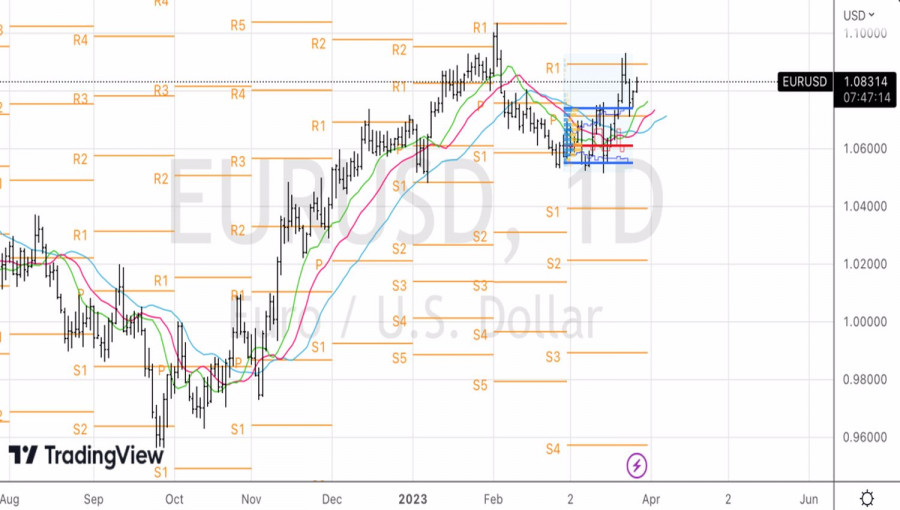If you want to do a good job, do it yourself. The current dominant thought in the financial markets is that the banking crisis has done some of the work for the Federal Reserve in getting inflation back to the 2% target. Say, credit conditions will tighten, there will be less credit, the economy will slow down, and prices will fall. As a result, the central bank will have no need to raise rates. The cycle of monetary tightening is over, the U.S. dollar will fall. Is this really the case?
Despite a slowdown in year-over-year U.S. inflation, which may be due to a high-base effect, monthly consumer prices continue to rise steadily. Bloomberg experts expect the Personal Consumption Expenditures Index to expand by 0.5-0.6% m/m in February, so it's a bit early to say that the Fed's job is done. Most likely, events will develop under a different scenario: the banking crisis no longer on the headlines, investors back to focusing on inflation and the Fed compelled to continue monetary tightening. Nordea Markets expects the Fed to raise borrowing costs by another 50 bps at the next meetings and keep it at its peak levels by the end of 2023.
Consequently, current futures market forecasts that the federal funds rate will end the year at 4.9% look too low. All the worse for the EURUSD bulls.
Dynamics of Fed and European Central Bank peak rate expectations

The dollar can advance as banking fears ease. However, there are always two currencies in any pair. And the ECB's position looks much more hawkish than that of the Fed. Despite Bloomberg's projections of a decline in consumer price growth to 7.3% in the eurozone in March, core inflation is still able to set a new record. For the ECB, policy priorities are clear - it must bring inflation to its knees. Therefore, an increase in the deposit rate by another 75-100 bps looks more than logical.
We are talking about 4%, which is 60 bps higher than what the derivatives market currently expects. The ECB has farther to go than the Fed, and if so, the major currency pair has a good chance to continue its rally. Especially since the rate-sensitive interest rate swap differential signals a serious undervaluation of the EURUSD.
EURUSD and swap differential dynamics


According to this indicator, the euro should be quoted at $1.17. Interestingly, the last time we saw the same gap in the US and German bond yields was when the regional currency was priced at $1.21. Therefore, the pair can still rally.
Technically, on the EURUSD daily chart, the process of recovering the uptrend continues. In order to reach the previous target at 1.103, the pair should break through the resistance level of 1.089. This is an important level. A breakthrough can reduce the risks of activating the 1-2-3 reversal pattern.
The material has been provided by InstaForex Company - www.instaforex.comfrom Forex analysis review https://ift.tt/kztA8Gf
via IFTTT
